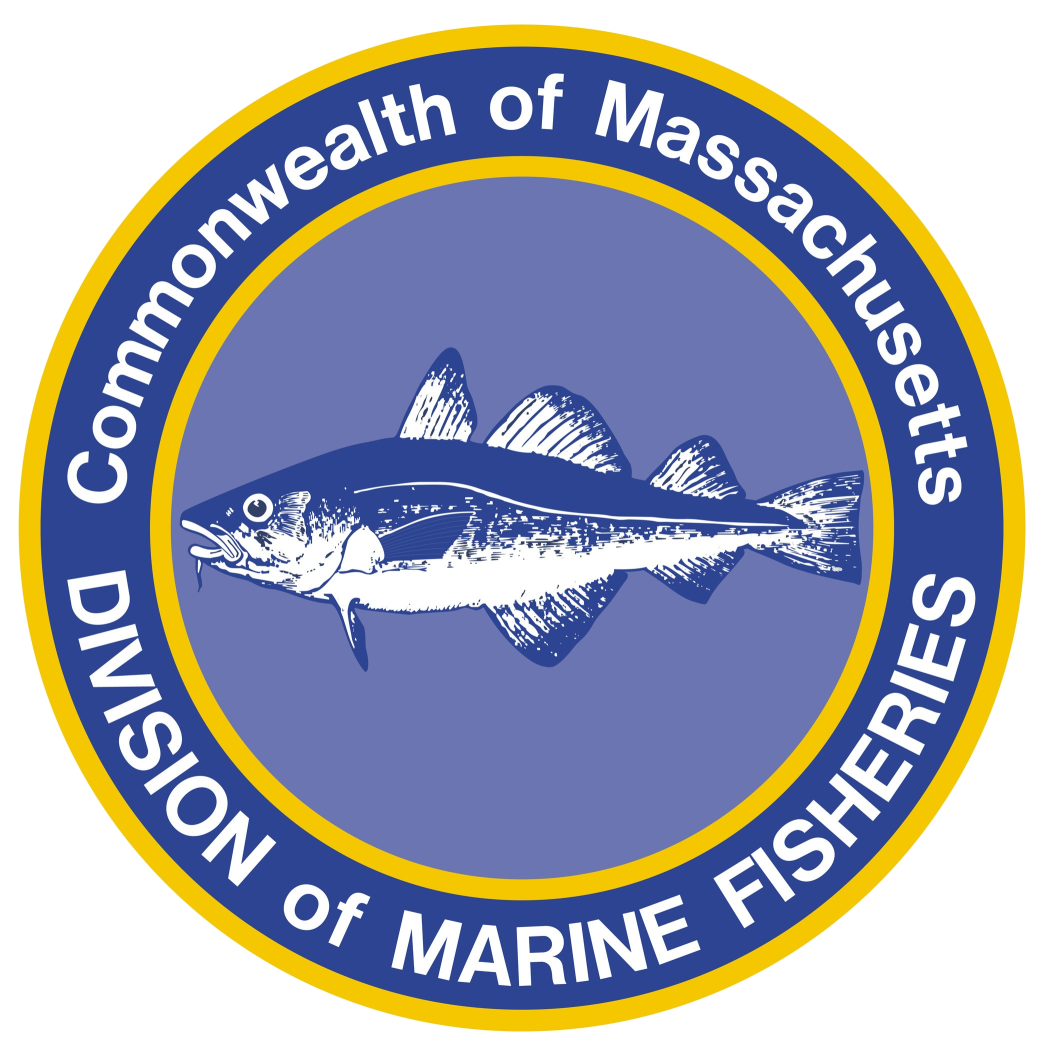- Division of Marine Fisheries
Diadromous, or sea-run fish, are the migratory fish that switch between marine and freshwater habitats to complete their life history. Most diadromous fish populations have declined sharply from historical periods when valuable fisheries were supported. Presently, minor fisheries occur for a few diadromous species and collectively these fish remain important forage for a wide range of fish and wildlife. The DMF Diadromous Fish Project actively monitors river herring, American shad, American eel, and rainbow smelt spawning runs in coastal rivers to contribute to population assessment and management of these species and to inform restoration planning.
River Herring. River herring are the most abundant diadromous fish (both the closely related alewife and blueback herring) in Massachusetts and most captures the public’s interest while on their iconic spring migrations. DMF staff manage eight river herring spawning run counting stations with local partners and provides technical assistance at approximately 30 more counting stations that are mostly volunteer-based visual counts. Final counts are not yet prepared for the 2022 season; however, it is likely that this year will have lower than average run counts for most rivers. The 2019 counts were above average coastwide and the highest in a 10-year period for some stations. Since 2019, the trend has been downward at most locations. This trend is certainly disappointing and will prompt DMF investigations on possible causes. We sample river herring at eight rivers that will allow us to relate population metrics to environmental conditions in the interest of determining influences on annual cohort strength. When the 2022 data are processed, we hope to find a few runs that are bucking this trend. The Pilgrim Lake run in Orleans has been increasing in recent years and the 2022 counts should be the highest in the 13-year time series. Recent cooperative restoration efforts between DMF and the Town of Orleans and the steady annual stewardship from the Town may be a positive influence on the increasing trend.
American Eel. Diadromous Fish Project monitoring in 2022 is not showing many encouraging signs among sea-run fish with the exception of American eel. The young-of-year (also called glass eel) run of juvenile eels that have made the remarkable journey from the Sargasso Sea to our coastal rivers appears to be the highest we have seen in 20 years of monitoring. This wave of glass eels coming from the ocean has been strong throughout New England in 2022. Two of our longest running eel ramp stations will exceed time series highs in 2022, with one station wearing out our eel counters by posting numbers that exceed the prior high catch by well over 100,000 eels. It is both intriguing and concerning to ponder on the environmental influences that may cause such highs and lows in recruitment of these sea run fish to our rivers.
Stream Maintenance. The DMF Fishway Crew ramped up efforts with stream maintenance to support diadromous fish runs during the pandemic. Large efforts were made in 2020 and 2021 at over 12 rivers to remove trash and debris jams, clear tree falls, and battle the channel altering effects of both native and invasive wetland plants. This practice has become more critical in the present day due to declining surface flows in some rivers, traditional stewardship that has wavered in some locations since the river herring harvest ban, and the onslaught of invasive wetland plants.
Furthermore, the development of the Wetlands Protection Act did not include consideration for this essential and time-honored practice. DMF and MassDEP have been working on a policy to better connect the statutory interests under the Wetlands Protection Act (MGL Chapter 131 §40) and sea-run fish passage (MGL Chapter 130 §19). This April, MassDEP released a new Wetlands Program Policy titled, Diadromous Fisheries Stream Management. This policy allows the development of stream maintenance plans to guide responsible activities. Under the policy, DMF will train and work with Towns and watershed organizations to conduct this work without unnecessary regulatory oversight and permitting. DMF greatly appreciates the efforts of DEP staff to develop this policy and all the many town staff and volunteers who put time in the rivers on this wet and dirty job.
It was a spring season that was again challenging due to COVID restrictions and limitations and the poor showing of river herring in many coastal rivers. The unexpected large turnout of glass eels reminded us of the optimism of spring. Also promising was the launching of a new effort to stock American shad in the Taunton River. DMF has teamed up with the USFWS and DFW to prepare a Taunton River shad habitat plan and monitoring plan related to a 5-year shad stocking program. Stocking from the USFWS Attleboro Hatchery began in mid-May with over 2 million larvae now swimming and feeding in their new home in the Taunton River.
By Brad Chase, Diadromous Fish Project Leader
